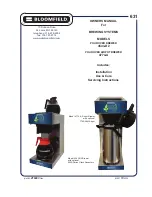
31
31
E
Function Description
Processing data carriers
Special
characteristics
To adjust the read/write functions to the numerous possible applications, a few unique fea-
tures have been implemented that the user can select and set when parametering or program-
ming the processor. These are as follows:
In normal operation a read/write job is rejected by the BIS C-60_2 processor by setting the AF
bit and an error number if there is no data carrier in the active zone of the read/write head. If
dynamic mode is configured, the processor accepts the read/write job and stores it. When a
data carrier is recognized, the stored job is carried out.
The command identifier 21
Hex
can be used to read out the program records stored in the pro-
gram from the data carrier. The user must document exactly which data are to be read from
where and with what number of bytes for the respective program (see example 8 on 43).
The command identifier 22
Hex
can be used to write the program records stored in the program
to the data carrier. The user must document exactly which data are to be written from where
and with what number of bytes for the respective program (see example 9 on 44).
Reading and writing
in dynamic mode
Read from data
carrier, with program
Mixed Data Access
Write to data carrier,
with program
Mixed Data Access
C60_2-028_823024_0401-e.p65
32
32
E
Mixed Data Access
Function Description
Processing data carriers
Small read/write programs can be stored in the BIS C-60_2 processor’s EEPROM.
The Mixed Data Access function is useful when the required information is stored on the data
carrier at various addresses. This function makes it possible to read out this “mixed”, i.e. non-
contiguously stored data from the data carrier in a single procedure and using just one com-
mand.
Up to 10 programs with up to 25 instructions can be stored. Each program instruction con-
tains a “start address” and a “number of bytes” specification. The amount of data for reading
may not exceed 2 kB.
Storing a program:
The command identifier 06
Hex
is used to send the read/write program to the BIS C-60_2 pro-
cessor. One program per command can be stored. All 25 program records plus an additional
2 bytes with FF
Hex
FF
Hex
as a terminator must always be sent. This means a total of
104 bytes
of information per program must be sent (including the command identifier and program num-
ber).
The individual program records must all be contiguous. They must be sent one after the other
and be terminated with FF
H
EX
FF
H
EX
as a terminator. It is recommended that the remaining, un-
used memory sector be filled with FF
H
EX
FF
H
EX
.
If an address range is selected twice, the data will also be output twice.
☞
All manuals and user guides at all-guides.com
all-guides.com
















































